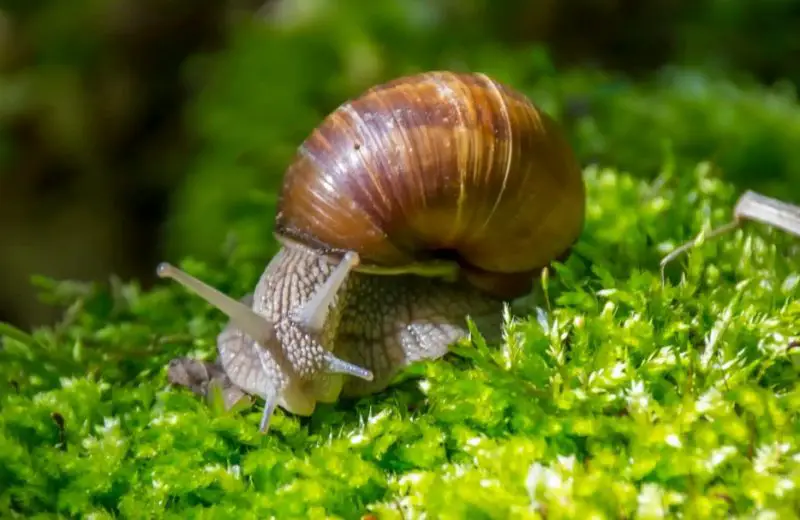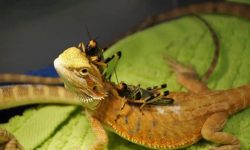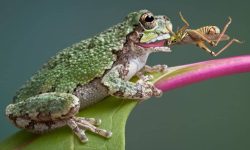Snails are slow but fascinating creatures with surprisingly diverse diets. Whether you’re watching them in your backyard after the rain or caring for them in a terrarium, understanding what snails eat is essential. These little gastropods have unique feeding habits and preferences, and their diets vary widely between species and environments.
In this article, you’ll discover what snails eat in nature, what foods they prefer in gardens, and how their eating habits help ecosystems thrive. Let’s take a closer look at 20 foods snails love, from natural greens to surprising treats.
Understanding What Snails Eat

Snails are herbivorous or omnivorous mollusks, meaning most feed primarily on plants, but some species also consume fungi, algae, or even decaying organic matter. Their flexible diet helps them adapt to almost any habitat — from forest floors and wetlands to gardens and aquariums.
Snails use a specialized mouthpart called a radula, which works like a tiny rasp or file. This organ contains thousands of microscopic teeth that scrape, cut, or grind food into small particles. The radula allows snails to feed on surfaces like leaves, rocks, or even decomposing logs.
Because of this versatility, snails play a crucial ecological role. They help recycle nutrients by breaking down plant debris and fungi, keeping ecosystems balanced and fertile. Now, let’s explore exactly what they eat in different environments.
What Do Snails Eat in the Wild?
In the wild, snails feed on a broad variety of foods, depending on the species and habitat. Most wild snails are herbivores, grazing on living plants, algae, fruits, and soft vegetation. Others may scavenge for dead plants, fungi, and even soil rich in minerals.
Wild snails also rely on natural calcium sources — such as limestone, bones, or shells — to build and maintain their own shells. These dietary habits not only sustain them but also make them important decomposers in many ecosystems.
Below are 20 foods snails love, both in the wild and in garden environments.
20 Foods Snails Love the Most
1. Algae
Algae are a staple food for aquatic and land snails alike. Snails use their radula to scrape algae from rocks, glass surfaces, or pond plants. This food source is soft, nutrient-rich, and easy to digest, making it perfect for snails of all sizes.
In aquariums and ponds, algae provide essential vitamins and minerals, keeping snails healthy and active. Many freshwater snails even help control algae growth naturally — a bonus for aquarium owners.
2. Leaves
Snails enjoy munching on a wide variety of leaves, especially tender ones. They feed on live leaves, fallen foliage, and even decaying leaves found on the forest floor. The softer the leaf, the more appealing it is.
In the wild, leaves from plants like dandelion, lettuce, and spinach are common choices. These provide vital fiber and moisture, helping snails stay hydrated while digesting efficiently.
3. Fruits
Fruits are one of snails’ favorite treats. Apples, pears, strawberries, and melons are particularly attractive because of their natural sweetness and moisture content. Wild snails often feed on fallen or overripe fruit.
However, fruits should be consumed in moderation by pet snails, as high sugar levels can cause digestive issues. In nature, these fruity feasts help snails gain quick energy, especially during warm, active months.
4. Vegetables
Vegetables are another important part of a snail’s diet. Cabbage, lettuce, cucumber, and carrot tops are popular choices. Snails prefer soft or slightly wilted vegetables that are easy to chew and digest.
In gardens, this preference often makes snails unwelcome guests. They can quickly damage crops and ornamental plants by chewing holes in leaves and stems. Still, vegetables provide essential nutrients that keep snails healthy and thriving.
5. Flowers
Many snails love feeding on delicate flowers and petals. Marigolds, pansies, and hibiscus are among their favorites. The vibrant colors and soft textures attract snails, especially during moist or rainy conditions.
Flowers provide not only nutrition but also hydration, as they often contain traces of water and nectar. This is one reason gardeners frequently find snails hiding near blooming plants early in the morning.
6. Fungi and Mushrooms
Fungi play a significant role in a snail’s natural diet. Wild snails often consume mushrooms, mold, and decaying fungal matter found on forest floors. These foods are full of minerals and contribute to a healthy digestive system.
Mushrooms also break down easily, making them ideal for snails that can’t handle tough plant material. This habit makes snails valuable decomposers in forest ecosystems.
7. Decaying Plant Matter
Snails are not picky eaters. They often consume decaying vegetation, fallen leaves, and decomposing stems. These materials are softer and easier to eat, making them ideal for older snails or species with less powerful radulas.
By eating dead plants, snails help recycle organic material into the soil, enriching it with nutrients that promote new growth. This behavior highlights their ecological importance as natural composters.
8. Tree Bark and Wood
Some land snails scrape bits of tree bark or decaying wood for nutrition. While they can’t digest hard wood fibers completely, they often feed on the moist, softened layers of rotting logs.
This type of feeding helps snails absorb minerals and small fungi growing on the bark. It’s also a source of trace elements essential for maintaining a healthy shell.
9. Grass and Weeds
In open fields or garden lawns, snails feed on young grass shoots and common weeds. Clover, chickweed, and dandelion greens are particularly appealing because of their tenderness and moisture.
This behavior can lead to minor lawn damage, but it also demonstrates how adaptable snails are in diverse environments. Their grazing helps control weed populations naturally.
10. Calcium Sources (Shells, Rocks, Soil)
Calcium is essential for snails, as it strengthens their shells and aids in growth. To meet this need, snails often consume calcium-rich materials such as limestone, chalk, or crushed eggshells.
In nature, they may lick mineral-rich soil or gnaw on small rocks to absorb calcium. A deficiency in this mineral can cause shell deformities or brittleness, making it a vital part of their diet.
11. Soft Stems and Shoots
Tender stems and new plant shoots are among the most appealing foods for snails. They’re easy to chew and packed with moisture and nutrients. You’ll often find snails on young seedlings or newly sprouted plants.
While beneficial for snails, this behavior can be frustrating for gardeners. A single snail can destroy multiple seedlings overnight, making these foods both loved and dreaded.
12. Lichen
Lichen, a mix of algae and fungi growing on rocks and trees, is another natural food source for wild snails. Its rough but soft texture is perfect for their scraping mouthparts.
In damp forests and shaded environments, lichen provides year-round nutrition, especially when fresh plant material is scarce. It’s one of the most resilient and reliable food sources in nature.
13. Aquatic Plants
For water-dwelling snails, aquatic plants such as duckweed, water lettuce, and algae films are everyday meals. They use their radula to graze the surface of these plants, leaving behind clear trails of feeding marks.
Aquatic snails play a crucial role in maintaining water clarity by preventing plant overgrowth. Their grazing habits help keep pond ecosystems balanced and clean.
14. Dead Insects
Some snail species, especially omnivorous ones, feed on dead insects or other small invertebrates. This behavior allows them to absorb additional proteins and minerals not found in plants alone.
Although rare among herbivorous species, this scavenging trait helps omnivorous snails survive in food-scarce environments, especially during dry seasons.
15. Compost and Organic Waste
Snails are frequent visitors to compost piles. They feed on vegetable scraps, fruit peels, and decomposing organic waste. This food source offers an excellent mix of nutrients and moisture.
In the wild, decaying organic matter mimics compost, providing the same benefits. By consuming these materials, snails contribute to faster decomposition and nutrient recycling.
16. Cucumber and Lettuce
Cucumber and lettuce are irresistible to both wild and pet snails. Their soft texture and high water content make them easy to eat and digest. These vegetables also help snails stay hydrated during dry conditions.
If you keep snails in a terrarium, offering cucumber slices or lettuce leaves is one of the simplest ways to ensure proper nutrition. Just remember to remove uneaten pieces to prevent mold growth.
17. Carrots and Zucchini
Snails are surprisingly fond of carrots and zucchini, especially when these vegetables are slightly softened. These foods provide essential vitamins such as beta-carotene and minerals that promote shell health.
In gardens, snails may chew on zucchini blossoms and tender leaves, leaving visible holes and trails of slime behind — clear signs of their nighttime activity.
18. Spinach and Kale
Leafy greens like spinach and kale are rich in iron, calcium, and vitamins — perfect for snail growth and shell maintenance. Wild snails naturally gravitate toward these nutrient-packed leaves when available.
However, overfeeding pet snails with spinach can lead to excess oxalates, which may interfere with calcium absorption. In moderation, these greens remain excellent dietary options.
19. Strawberries and Melons
Snails can’t resist the sweet aroma and taste of fruits like strawberries, cantaloupe, and watermelon. The soft texture makes them easy to eat, while the natural sugars provide a burst of quick energy.
In gardens, snails often target ripening fruit, especially those close to the ground. Their feeding activity can cause damage to crops but also plays a role in natural fruit decomposition.
20. Detritus and Soil Nutrients
Lastly, snails feed on detritus — the organic matter found in soil, such as plant fragments, microorganisms, and decaying material. This diet provides trace elements and supports healthy gut flora.
By ingesting soil, snails gain access to minerals that strengthen their shells and maintain internal balance. This behavior also aerates the soil, benefiting plant roots and micro-ecosystems.
How Snails Find Their Food
Snails rely primarily on smell and touch to locate food. Their tentacles contain sensory cells that detect chemicals and moisture in the air. Once they sense a potential food source, they glide toward it, guided by the scent.
Because snails are nocturnal, they prefer to feed at night or during early mornings when humidity is high. Moisture helps them move easily and prevents their soft bodies from drying out. Their slow but steady search for food is both instinctive and efficient.
Foods to Avoid Feeding Pet Snails
While snails are adaptable, not all foods are safe. Avoid feeding pet snails salty, spicy, or processed foods. Salt, in particular, is lethal — it dehydrates their bodies rapidly. Acidic foods like citrus fruits should also be avoided, as they can irritate their skin and digestive systems.
Instead, focus on natural plant-based foods, fruits, and calcium sources. Providing a shallow dish of crushed eggshells or cuttlebone can help meet their mineral needs safely.
Why Snails Are Important to Ecosystems
Snails are more than just slow-moving garden dwellers — they’re essential to the health of ecosystems. By eating decaying plants and fungi, they help decompose organic matter, returning nutrients to the soil. This process supports new plant growth and maintains ecological balance.
They’re also a food source for many animals, including birds, frogs, beetles, and small mammals. Without snails, food chains and soil health would be severely affected.
FAQs About What Snails Eat
Do snails eat other snails?
Most land snails don’t, but some carnivorous species do consume other snails or eggs when food is scarce.
Can snails eat bread or human food?
It’s not recommended. Bread and processed foods lack nutrients and can cause digestive problems.
How often should I feed pet snails?
Daily feeding is ideal, but always remove leftovers within 24 hours to prevent mold or bacteria.
Do snails drink water?
Snails absorb moisture from their environment rather than drinking. Keeping their habitat humid ensures proper hydration.
Can snails eat grass?
Yes, especially soft or newly sprouted blades. However, they prefer tender greens and vegetables when available.
Conclusion
Snails may move slowly, but their appetite for nature’s bounty is anything but small. From algae and fruits to vegetables and fungi, these creatures play an essential role in recycling nutrients and maintaining environmental balance.
Whether you’re observing them in your garden or caring for them in a tank, understanding what snails eat helps you appreciate their remarkable adaptability and ecological importance.






